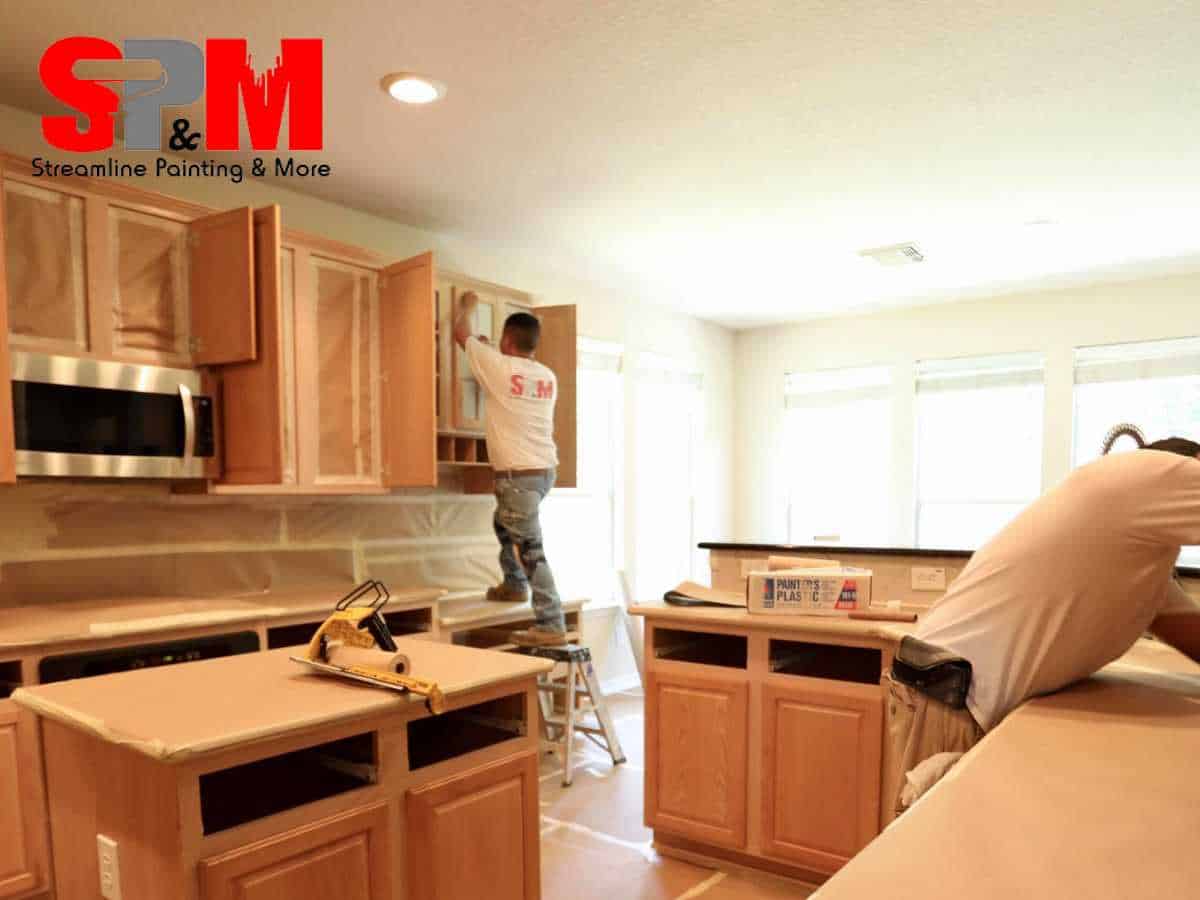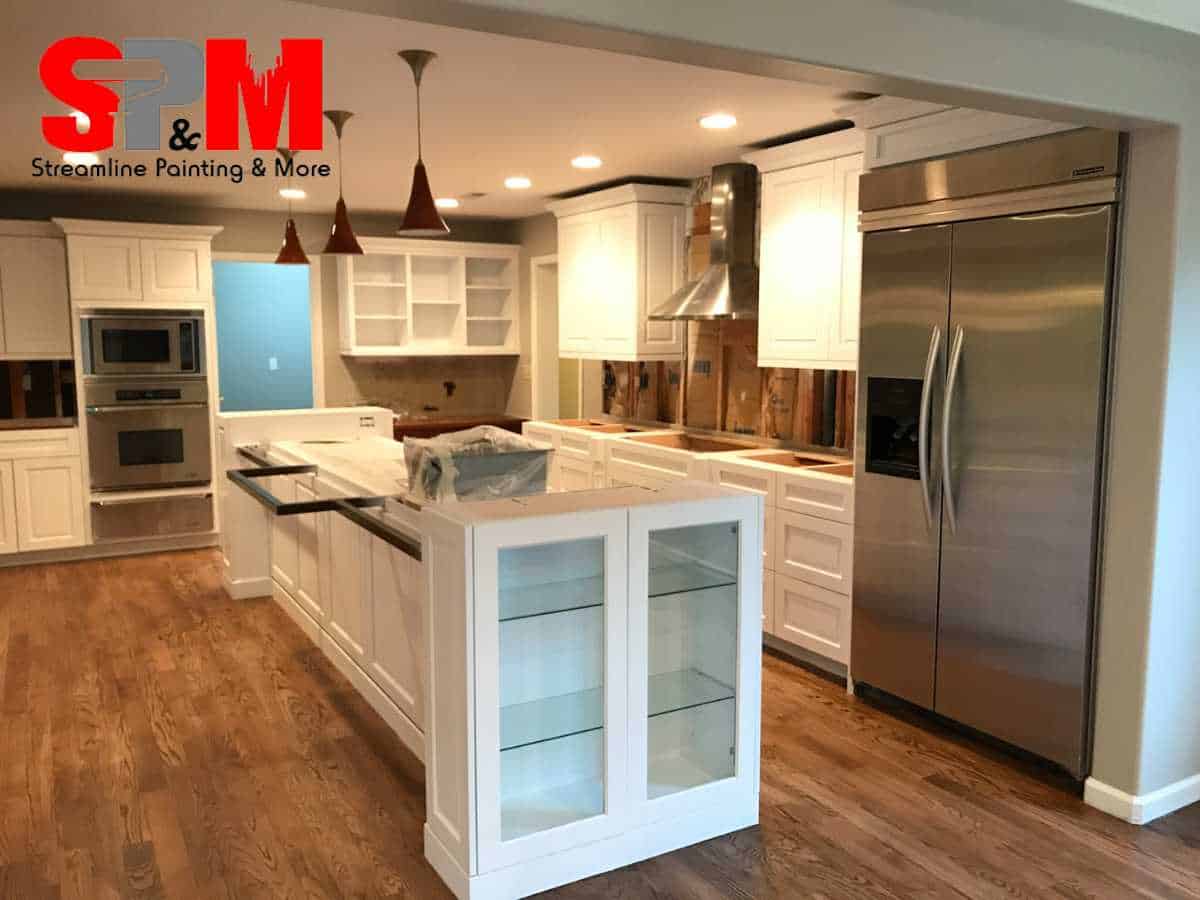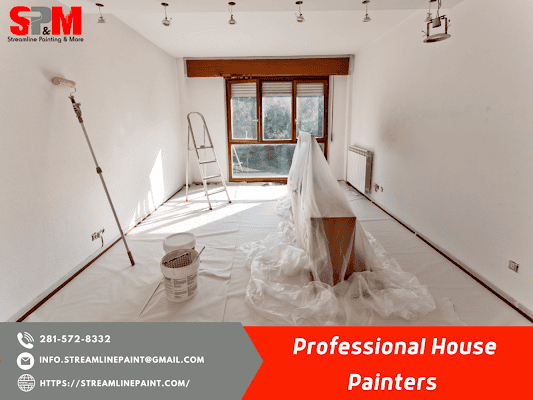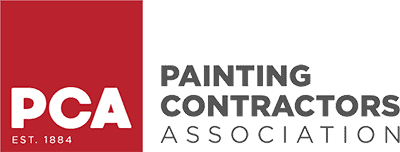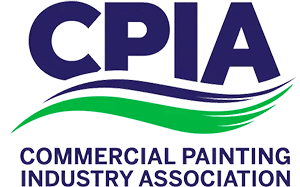How to guarantee the safety of your home and belongings during the paint job
Painting your home can be a great way to give it a fresh look and feel. However, it can also be a messy and potentially hazardous process if you’re not careful. From protecting your furniture and other belongings to ensuring proper ventilation and using the right tools and techniques, there are many things to consider when it comes to guaranteeing the safety of your home and belongings during a paint job. In this blog post, we’ll provide you with some helpful tips and guidelines to make sure your next paint job goes smoothly and safely, allowing you to enjoy the new look of your home without any unnecessary stress or damage.
Preparing your home for the paint job
Before you start painting, it’s important to prepare your home to ensure a safe and successful paint job. This includes clearing the area of any furniture or decor that could get in the way or be damaged by paint, covering floors and surfaces with drop cloths or plastic sheeting, and filling any holes or cracks in the walls. Additionally, it’s important to remove any hazardous materials or chemicals from the work area and to make sure there’s proper ventilation to prevent any fumes or toxins from building up. By taking these necessary steps, you can help guarantee the safety of your home and belongings during the paint job and ensure that you achieve the best possible results.
Choosing the right paint
Choosing the right type of paint is crucial when it comes to guaranteeing the safety of your home and belongings during a paint job. Look for paint that is labeled as low-VOC (volatile organic compounds) or zero-VOC, as these types of paint emit fewer harmful chemicals and fumes during the drying process. It’s also important to choose the right type of paint for the surface you’ll be painting, such as flat or matte paint for ceilings and walls and satin or semi-gloss for trim and cabinets. Consider the color and finish as well, as certain colors and finishes may require more coats or touch-ups, which can increase the risk of damage to your home or belongings. By doing your research and selecting the right paint for your project, you can help ensure a safe and successful paint job.
Hiring a reputable painter
Hiring a reputable painter is an important step in ensuring the safety of your home and belongings during a paint job. Look for a painter with a good reputation and positive reviews from previous clients. Ask for references and check them, as well as the painter’s licensing and insurance. A reputable painter will also take the necessary safety precautions, such as wearing protective gear and ensuring proper ventilation. Additionally, they will use high-quality paint and the right tools and techniques to ensure a successful and long-lasting paint job. By investing in a reputable painter, you can have peace of mind knowing that your home and belongings are in good hands and that the paint job will be completed safely and to your satisfaction.
Protecting your furniture and other belongings
Protecting your furniture and other belongings during a paint job is essential to avoid any potential damage or staining. Start by moving any furniture out of the room or covering it with plastic sheeting or drop cloths. For larger items that can’t be moved, wrap them in plastic or cover them with old sheets or blankets to keep them safe from paint splatters or drips. Use painter’s tape to protect any hardware, fixtures, or molding that can’t be removed. You may also consider removing wall art and decor to prevent accidental damage. By taking these precautions and protecting your furniture and other belongings, you can help ensure a successful and stress-free paint job.
Using the right tools and techniques
Using the right tools and techniques is crucial when it comes to guaranteeing the safety of your home and belongings during a paint job. Invest in high-quality paintbrushes, rollers, and other painting tools to ensure a smooth and even application of paint. Use a paint tray or grid to avoid spills or drips and to prevent paint from getting onto the floor. When painting ceilings or high walls, use a sturdy ladder or scaffolding and have a helper hold it steady. When using a spray gun, make sure to wear protective gear and cover any nearby furniture or belongings with plastic sheeting. By using the right tools and techniques for your specific project, you can help ensure a safe and successful paint job that will look great for years to come.
Proper ventilation during the paint job
Proper ventilation is important during a paint job to ensure the safety of your home and your health. Open windows and doors to allow fresh air to circulate and to prevent harmful fumes from building up. Use fans to increase airflow and to help the paint dry more quickly. If you’re painting in a smaller or enclosed space, consider using a ventilator or respirator to protect yourself from paint fumes. Additionally, avoid smoking or using any other sources of ignition near the paint and make sure all electrical appliances are unplugged and kept away from the work area. By ensuring proper ventilation during the paint job, you can help prevent any health risks or damage to your home and belongings.
Tips for cleaning up after the paint job
Cleaning up after a paint job is just as important as the painting itself to ensure the safety of your home and belongings. Start by allowing the paint to dry completely before cleaning up any spills or drips. Use a scraper or a razor blade to remove any dried paint from surfaces and then sweep or vacuum the area to remove any paint chips or dust. Dispose of any leftover paint and paint cans properly, following local regulations for hazardous waste disposal. Clean brushes, rollers, and other painting tools with warm, soapy water and let them air dry. Use a cleaner specifically designed for removing paint from surfaces to clean any accidental spills or stains on your furniture or floors. By following these tips and cleaning up properly after the paint job, you can help ensure a safe and clean home.
Dealing with unexpected issues during the paint job
Dealing with unexpected issues during a paint job can be stressful, but it’s important to stay calm and take the necessary steps to ensure the safety of your home and belongings. If you notice any peeling or cracking paint, mold or mildew, or water damage, stop the paint job immediately and address these issues first. It’s important to fix any underlying issues before applying new paint to avoid further damage. If you encounter any unexpected obstacles, such as a power outage or bad weather, make sure to take the necessary precautions to protect your home and belongings. If you’re unsure how to proceed, consult with a professional painter or seek advice from your local hardware store. By addressing unexpected issues and taking the necessary precautions, you can help ensure a safe and successful paint job.
Maintaining the safety of your home and belongings after the paint job
Maintaining the safety of your home and belongings after the paint job is important to ensure a long-lasting and beautiful finish. Avoid touching or rubbing against freshly painted surfaces for at least a week to allow the paint to fully cure. Be cautious when moving furniture back into the room, as sliding or dragging items can scratch or damage the new paint. Additionally, avoid placing objects on newly painted surfaces for at least a week to prevent sticking or marring of the surface. Regularly inspect the painted surfaces for any signs of wear and tear or damage, and address any issues immediately to avoid further damage. By maintaining the safety of your home and belongings after the paint job, you can help ensure a beautiful and long-lasting finish.
Common mistakes to avoid during a paint job
There are a number of common mistakes to avoid during a paint job to ensure the safety of your home and belongings, as well as a beautiful and long-lasting finish. One of the most common mistakes is not properly preparing the surface before painting. This can result in poor adhesion, peeling, or flaking of the paint. Another mistake is using low-quality or mismatched paint, which can result in uneven or inconsistent color and finish. Applying too many coats of paint too quickly or not allowing sufficient drying time between coats can also lead to a poor finish or damage to the painted surfaces. Other mistakes to avoid include using the wrong tools or techniques, not properly ventilating the area, and not cleaning up properly after the paint job. By avoiding these common mistakes and taking the necessary precautions, you can help ensure a safe and successful paint job that will look great for years to come.
Understanding the importance of insurance and warranties
Understanding the importance of insurance and warranties is crucial when undertaking a paint job to protect your home and belongings. When hiring a professional painter, make sure they have proper insurance coverage to protect against any accidents or damage that may occur during the job. This includes liability insurance, which covers any damages that occur to your home or property, as well as worker’s compensation insurance, which covers any injuries that may occur to the painters while on the job. Additionally, make sure to ask for and review any warranties or guarantees offered by the paint manufacturer or the painting contractor. A good warranty can provide peace of mind that the paint job will last and any issues will be addressed in a timely and efficient manner. By understanding the importance of insurance and warranties, you can help protect your investment and ensure the safety of your home and belongings.
Questions to ask your painter before the job.
Before hiring a painter for your paint job, it’s important to ask a series of questions to ensure the safety of your home and belongings. Here are some key questions to ask your painter:
- Do you have liability insurance and worker’s compensation insurance?
- Are you licensed and registered to operate in this area?
- How long have you been in the painting business?
- Can you provide references or photos of previous work?
- What type of paint and tools will you be using?
- How will you protect my furniture and other belongings?
- Will you be doing the work yourself or subcontracting it out?
- How long will the job take and what is your estimated timeline?
- Do you offer any warranties or guarantees on your work?
- What is your cleanup process like and how will you dispose of any leftover paint or materials?
Asking these questions will help you choose a reputable and reliable painter who will do a safe and high-quality job on your home and belongings.
DIY vs professional painting: which is the better choice for you?
While DIY painting may seem like a cost-effective solution for your home, there are several reasons why hiring a professional painter is a better choice.
Firstly, professional painters have the experience and expertise to deliver a high-quality finish that will last for years to come. They have the knowledge to select the right type of paint and tools for the job, ensuring a perfect finish that you may not be able to achieve on your own.
Secondly, professional painters have access to specialized equipment that you may not have, such as high-quality brushes, rollers, and sprayers. These tools allow for a more efficient and effective application of the paint, resulting in a faster and more professional-looking finish.
Thirdly, professional painters have the necessary safety equipment and training to protect themselves and your home during the paint job. They understand how to properly ventilate the area and protect your furniture and belongings from paint splatters and spills.
Finally, by hiring a professional painter, you can save yourself time and stress, as they will handle all aspects of the job from preparation to cleanup, allowing you to focus on other important tasks.
Choosing the right time of year for a paint job
Choosing the right time of year for a paint job is crucial to ensure a successful and long-lasting finish. The ideal time of year for a paint job depends on several factors, including the temperature and humidity levels.
The best time for an exterior paint job is during the dry season when temperatures are between 50-85°F and humidity is low. Painting during this time will ensure that the paint dries properly and adheres well to the surface. Additionally, avoiding rainy or snowy weather is important to prevent any moisture from getting trapped under the paint.
For interior paint jobs, the temperature and humidity levels are more controllable, so it’s less of an issue. However, it’s still important to choose a time of year when you can properly ventilate the area, as paint fumes can be harmful if inhaled in large quantities.
It’s also important to consider any events or activities that may be happening in your home or neighborhood during the paint job. For example, if you have a family gathering or an outdoor event scheduled, it’s best to plan the paint job accordingly to avoid any inconvenience or disruption.
In summary, choosing the right time of year for a paint job is important to ensure the success and longevity of the finish. By considering the temperature, humidity, and any upcoming events, you can ensure a smooth and stress-free paint job.
Conclusion
In conclusion, guaranteeing the safety of your home and belongings during a paint job is crucial to ensure a successful and stress-free experience. By following the tips outlined in this post, you can prepare your home, choose the right paint, hire a reputable painter, protect your belongings, use the right tools and techniques, ensure proper ventilation, and maintain safety after the paint job.
At Streamline Painting & More, we understand the importance of these steps and strive to provide our clients with the best possible service. As a leading provider of residential and commercial painting services in Houston, TX, we specialize in interior and exterior painting, cabinet painting, and commercial painting services. We also offer a range of additional services, including boat dock/deck staining and restoration, pressure washing and roof cleaning, and residential remodeling.
If you’re in need of professional painting services in Houston, TX, don’t hesitate to contact Streamline Painting & More. We’re dedicated to providing our clients with the highest quality workmanship and customer service, and we look forward to helping you transform your home or business with a beautiful, long-lasting paint job.




